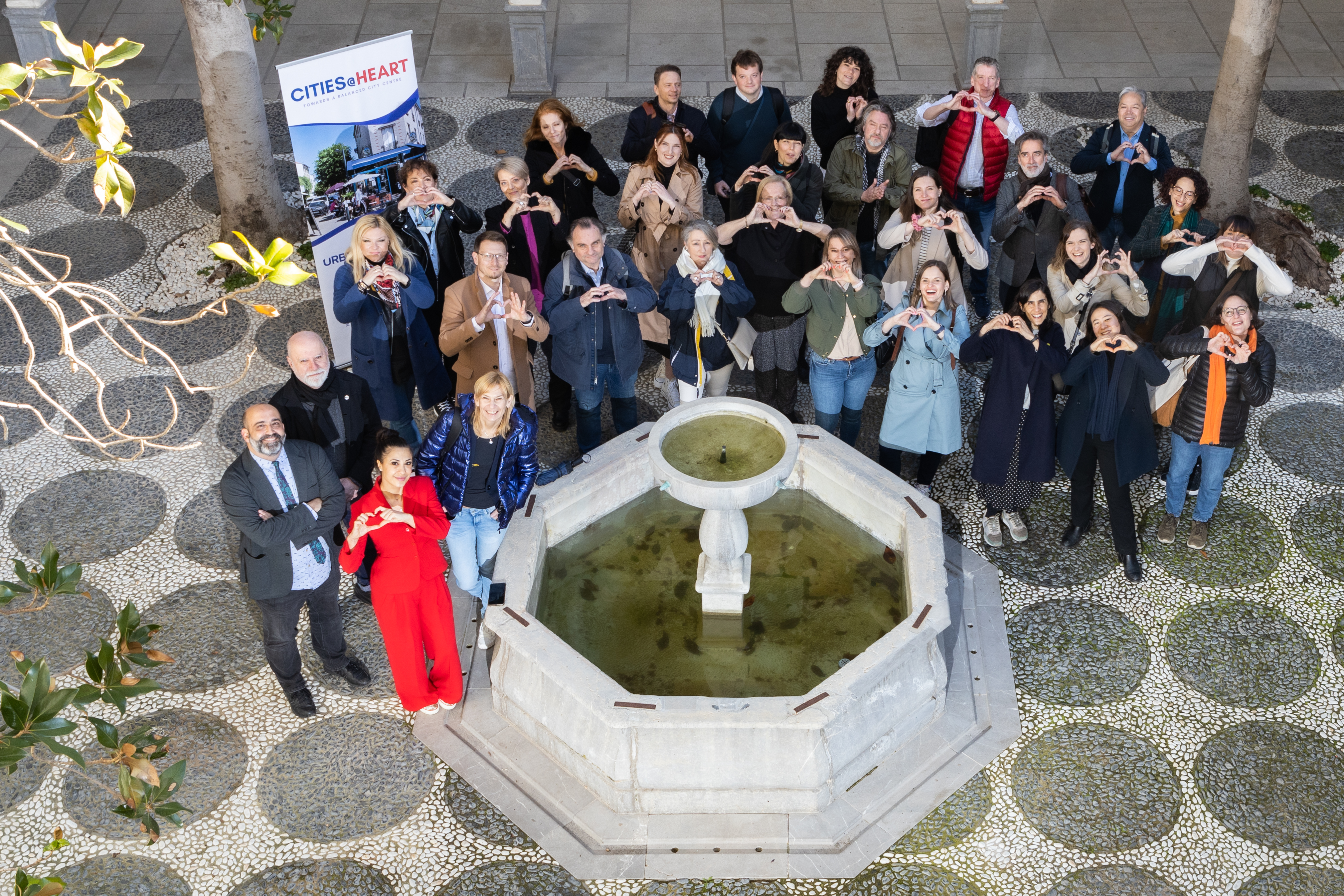Activities and Developments in URBACT Local Groups
The report provides an overview of activities and developments within various URBACT Local Groups. These groups offer the opportunity to observe diverse approaches and collaborative efforts undertaken by local stakeholders to address challenges faced by their respective city centres. This section showcases the diversity of strategies and solutions being implemented locally.
This quarter, the network has been working specifically on the following challenges:
Gentrification (t2)
The primary aspects of this phenomenon are the loss of inhabitants due to housing shortages, a lack of adaptation to current family models, or the decline of local services and commerce, as well as the management of the impacts of tourism.
Adaptation to climate change (t3)
Historical urban centres, particularly those with a heritage status or those inhabited by more vulnerable populations, often face greater climate risks compared to more modernised urban areas. This susceptibility may arise due to the fragility and condition of the built environment and the socio-demographic characteristics of its inhabitants.
Transnational Meeting in Granada
Granada hosted the second Transnational meeting, concluding the activation phase. A detailed account of the recent transnational meeting in Granada is presented in the next section and captures discussions, exchanges, and key takeaways from this pivotal gathering. At the Granada meeting, several local experts presented successful projects implemented in Granada's historic centre, which could be of interest for other participating cities, for example, social and urban regeneration in the Santa Adela neighbourhood.
The Santa Adela neighbourhood's intervention aims to regenerate its urban landscape, encompassing around 1,500 homes built in the late 1950s for those affected by the 1956 Granada earthquake. Its primary goals include enhancing residents' quality of life, fostering community maintenance, social cohesion, and socio-economic revival. This entails a comprehensive, publicly-funded effort across five areas for new construction and green spaces, with two areas dedicated to existing building rehabilitation. To achieve this, a Special Plan was formulated, establishing an Integrated Management Area employing expropriation as a pivotal action system, including compiling assets and rights, conducting joint appraisals, executing expropriation procedures, and assigning new residences. The project notably employed circular construction principles and a plan of social programming to accompany the rehousing of inhabitants.
To learn more, watch the video from the URBACT URGE Network for Circular Building Cities.
Learnings from Granada
Drawing from insights gleaned from the Granada meeting, this section summarises best practices presented there and serves as a source of inspiration and guidance for future projects within the network, showcasing innovations spearheaded by the meeting’s host city, therefore underlining the value of shared learning and cross-pollination of ideas.
Data-Driven Approaches

This section features an exploration of methodologies and frameworks employed in defining indicators and policies tailored to the unique needs of city centres. Essential to informed decision-making and policy formulation, leveraging data enables cities to make evidence-based decisions contributing to more effective and sustainable urban development.
The workshop held in Granada aimed to achieve two primary goals: first, to cultivate a comprehensive list of common indicators that effectively respond to the network's diverse needs; and second, to explore various methodologies and stakeholders involved in acquiring pertinent data.

Throughout the workshop, each city representative provided insights into their respective data infrastructure concerning the challenges discussed: Adaptation to climate change and Gentrification. These indicators were closely tied to policies aimed at addressing the associated statistics.
Future Steps and Initiatives
Concluding the report, forthcoming steps and initiatives envisioned within the Cities@Heart network are outlined, delineating the roadmap for future endeavours. This section emphasises the collective commitment toward realising a shared vision of vibrant, inclusive, and resilient city centres.
In June, the planning phase will continue with a visit to Quadrilatero Urbano (the cities of Barcelos, Braga, Vila Nova de Famalicão and Guimarães) in Portugal. This phase will strengthen the practical knowledge and skills of partners in the defined policy areas, draw lessons from the exchanges on an ongoing basis, and focus on applying them at the local level.The main outcome will be the Integrated Action Plans (IAP). The focus for this meeting will be on New supply models and Building a city centre identity, addressing issues like vacant shops and community reinforcement.
Overall, the first Quarterly Report provides a comprehensive overview of progress, insights, and future directions within the Cities@Heart network, showcasing the collaborative efforts and commitment to creating thriving urban centres.
The first Quarterly Report is available for download in the Cities@Heart library or accessible online with the interactive PDF Reader Calameo.
Save the date!
In addition to the TNMs, the network will be conducting two webinars.
May 13, 2024
City Centers at Night Time with Simone d’Antonio from the URBACT Cities After Dark Network
Contact the network for registration details
September 2024
Last-Mile Logistics
Date to be determined
Photos © La Ampliadora
La Ampliadora Social School of Photography of Granada is a space created specifically for students, so that they can use it both inside and outside of school hours, with everything necessary to learn, research, work and enjoy photography. The school is committed to participatory training with a team of young, active professionals who come from various fields related to photography, cultural management and other artistic disciplines.


